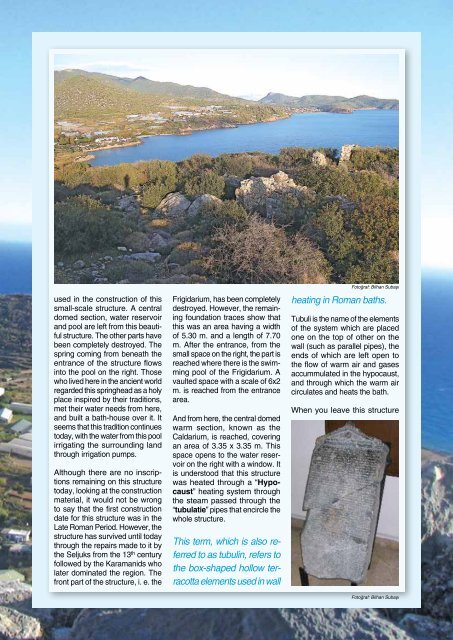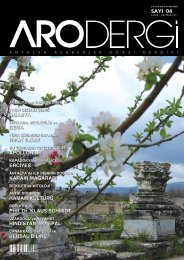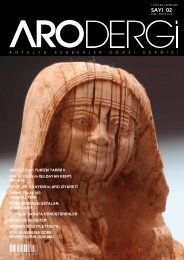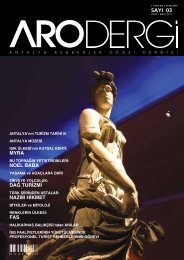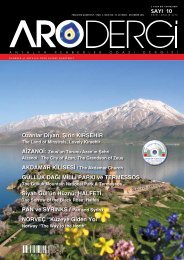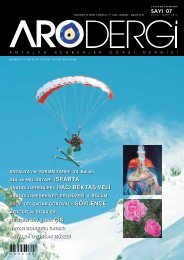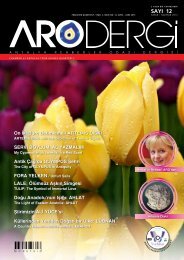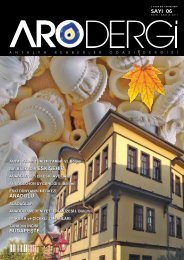Sayı 11- Ocak/Mart 2013 - Antalya Rehberler Odası
Sayı 11- Ocak/Mart 2013 - Antalya Rehberler Odası
Sayı 11- Ocak/Mart 2013 - Antalya Rehberler Odası
- No tags were found...
Create successful ePaper yourself
Turn your PDF publications into a flip-book with our unique Google optimized e-Paper software.
used in the construction of thissmall-scale structure. A centraldomed section, water reservoirand pool are left from this beautifulstructure. The other parts havebeen completely destroyed. Thespring coming from beneath theentrance of the structure flowsinto the pool on the right. Thosewho lived here in the ancient worldregarded this springhead as a holyplace inspired by their traditions,met their water needs from here,and built a bath-house over it. Itseems that this tradition continuestoday, with the water from this poolirrigating the surrounding landthrough irrigation pumps.Although there are no inscriptionsremaining on this structuretoday, looking at the constructionmaterial, it would not be wrongto say that the first constructiondate for this structure was in theLate Roman Period. However, thestructure has survived until todaythrough the repairs made to it bythe Seljuks from the 13 th centuryfollowed by the Karamanids wholater dominated the region. Thefront part of the structure, i. e. theFrigidarium, has been completelydestroyed. However, the remainingfoundation traces show thatthis was an area having a widthof 5.30 m. and a length of 7.70m. After the entrance, from thesmall space on the right, the part isreached where there is the swimmingpool of the Frigidarium. Avaulted space with a scale of 6x2m. is reached from the entrancearea.And from here, the central domedwarm section, known as theCaldarium, is reached, coveringan area of 3.35 x 3.35 m. Thisspace opens to the water reservoiron the right with a window. Itis understood that this structurewas heated through a “Hypocaust”heating system throughthe steam passed through the“tubulatie” pipes that encircle thewhole structure.This term, which is also referredto as tubulin, refers tothe box-shaped hollow terracottaelements used in wallFotoğraf: Bilhan Subaşıheating in Roman baths.Tubuli is the name of the elementsof the system which are placedone on the top of other on thewall (such as parallel pipes), theends of which are left open tothe flow of warm air and gasesaccummulated in the hypocaust,and through which the warm aircirculates and heats the bath.When you leave this structureFotoğraf: Bilhan Subaşı


